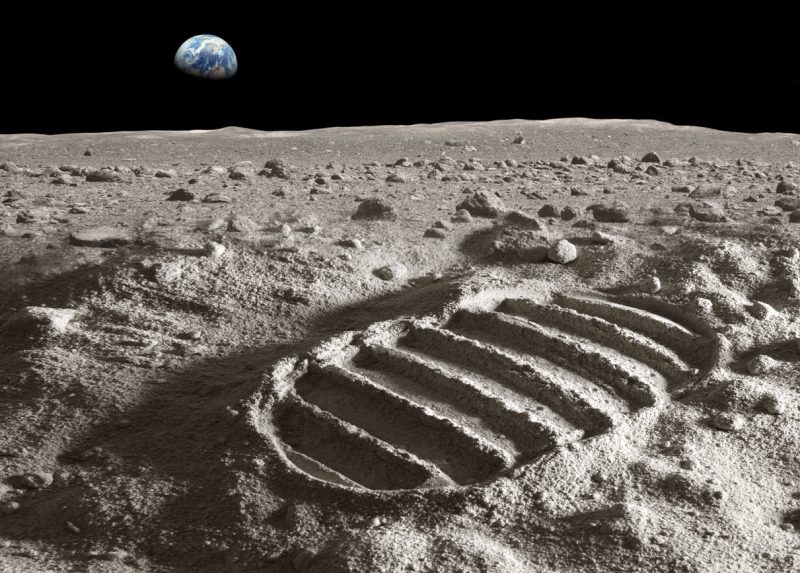We’ve all been there–it’s time to pack to go home at the end of your holiday, so into the trash goes anything you don’t need. Half-used bottles of toiletries, those sandals that broke. Great! Now there’s room to bring home all of your souvenirs and a couple of pretty pebbles from the beach.
And that’s pretty much how it goes for astronauts too. The penalty for having overweight baggage on a return journey from the Moon, though, is a little more serious than getting slammed with fees by the airline. The amount of fuel is carefully calculated, so too much stuff on board might cause the lunar lander a bit of a problem at take-off.
Anything that can be left behind means more samples can be brought on the 238,900-mile trip back to Earth.Our love affair with the cosmos is as old as the human race.
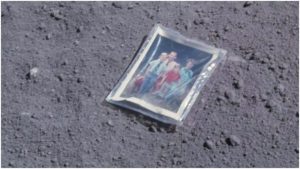
But the first human-made object to officially travel into space was an experimental German V2 ballistic missile in 1944. America quickly picked up the gauntlet. At the close of World War II, the top Nazi science and technology brains were “procured” by the U.S. government (Operation Paperclip) so that America could benefit from their wartime experiments.
Modified missiles were soon being tested at the White Sands Missile Range in New Mexico, with the first high-speed multistage rockets being developed from 1948. This system of dumping dead weight as each stage exhausted its fuel was designed to allow the upper stage to reach a large enough distance from Earth’s gravity that it could remain in orbit.
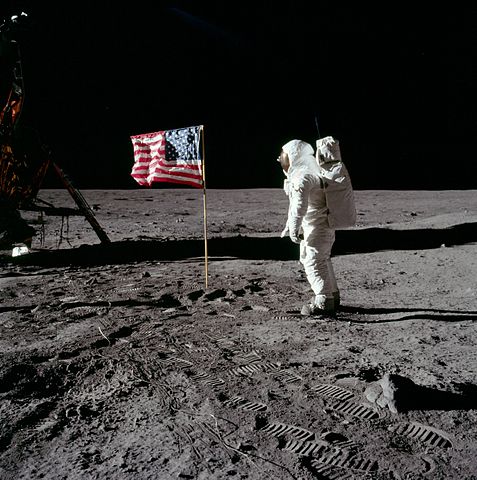
And so, ever since the launch of the first artificial satellite, Sputnik 1, in October 1957, leaving behind items that are no longer useful has been integral to the success of our forays into space.
If you pop “space trash” into your search engine, you get a slightly alarming picture of the Earth surrounded by a halo of decaying satellites and spent rocket stages. According to NASA, there are more than 500,000 pieces of junk larger than a marble, and many smaller fragments, floating in space. Traveling at speeds of up to 17,500 mph as they orbit our globe, the amount of debris is an increasing problem for space agencies and satellite owners because of the damage a collision can cause.
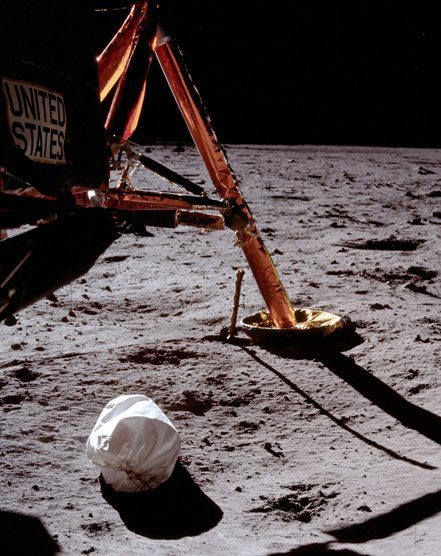
But just how much obsolete stuff has been dumped on the Moon? Well, NASA tells us it’s around 20 tons, but other sources quote 10 times that amount. Some of the items are pretty valuable, but they were still traded for moon rocks once they had served their purpose. For example, in April 1972, the payload of the Apollo 16 lunar mission included a gold-plated far-ultraviolet spectrograph camera designed by Dr. George Carruthers. Often referred to as Dr. Carruthers telescope, it was used by astronaut John Young to take the first ever images of the Earth’s atmosphere in ultraviolet light, as well as pictures of other galactic objects such as the Milky Way. A back-up duplicate can be seen at the Smithsonian National Air and Space Museum.
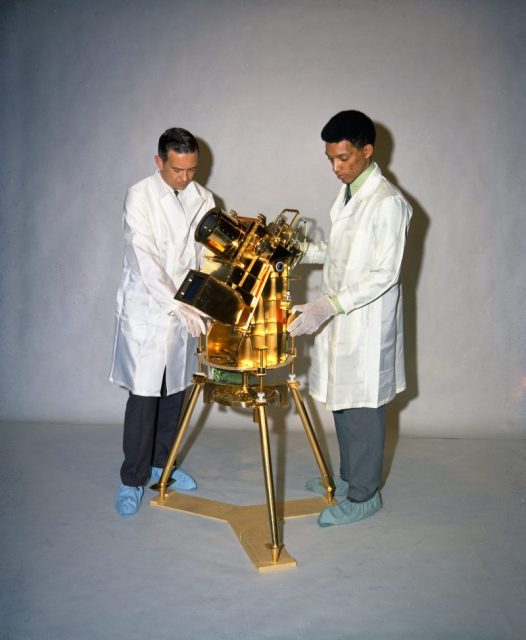
It was left, still mounted on its tripod, sitting on the surface of the Moon, along with the scattered remnants of, to that date, no less than 50 spacecraft and lunar module stages that had landed or been deliberately crashed at the end of their mission.
A “gold replica of an olive branch, the traditional symbol of peace, left on the Moon’s surface by Apollo 11 crew members” NASA’s gesture which “represented a wish for peace for all mankind” was the first of many sentimental items that mark our presence. Other meaningful objects that have been deliberately left as a legacy include:
- A piece of wood from the propeller of the Wright brothers first successful airplane
- The Apollo 11 Goodwill Messages: a small silicon disc with messages from 4 U.S. Presidents and the leaders of 73 other countries
- Mercury Seven astronaut Deke Slayton’s diamond studded astronaut pin
- 2 golf balls hit by Apollo 14 Commander Alan Shepard during a moon walk, using an improvised 6-iron, the head of which he had smuggled on-board in a sock
- The aluminium “Fallen Astronaut” sculpture which was placed next to…
- …. A plaque bearing the names of 14 men to whom it was dedicated
- Mission patch from the ill-fated Apollo 1
- 6 American flags–the first one to be planted was knocked over as the lunar module ascended from the surface
- A family photograph left by astronaut Apollo 16 Charles Duke, as requested by his kids, “so the whole family can go to the moon.“
- A feather from the Air Force Academy’s mascot falcon “Baggin”
- 1 ounce of the ashes of geologist and planetary science researcher Eugene Shoemaker
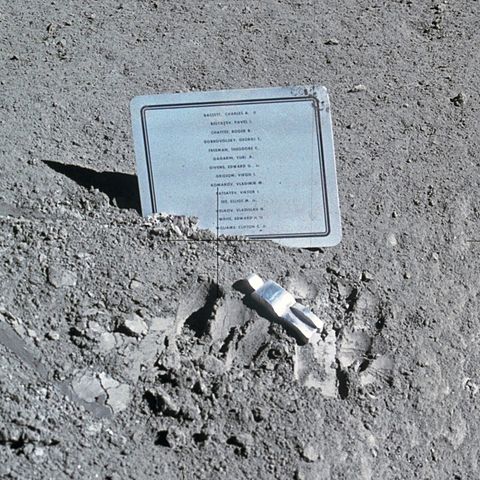
There is also a seemingly endless list of everyday stuff like shovels, equipment from experiments, ladders, dead power packs, wrappers from space food, towels, 12 pairs of boots, and used wet wipes.
But, think about this for a moment, what about the regular “waste” that we all produce, every day. Yep. Basically, there is raw sewage sealed up in bags and dumped on our moon. To be exact, 96 bags full of faeces, urine, and vomit. On a scientific level, this could be a good thing. We can study what happens to poo that is left in such an extreme environment.
Related story from us: Alan Shepard pulled out a six-iron and played golf on the Moon
This seems to fly in the face of the old adage that we should “take nothing but photographs, leave nothing but footprints.” We can’t help but wonder if all those carefully placed mementos are overshadowed by the piles of mess that have been left with them.
